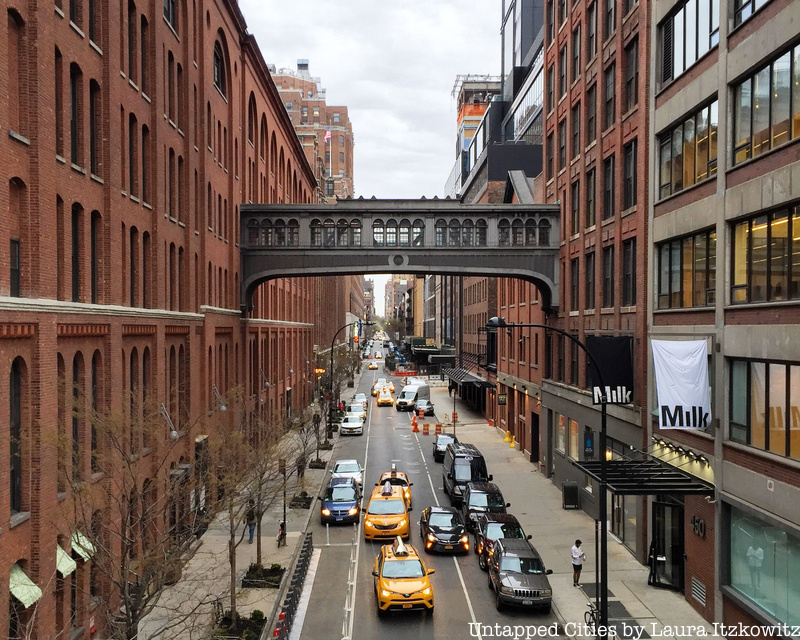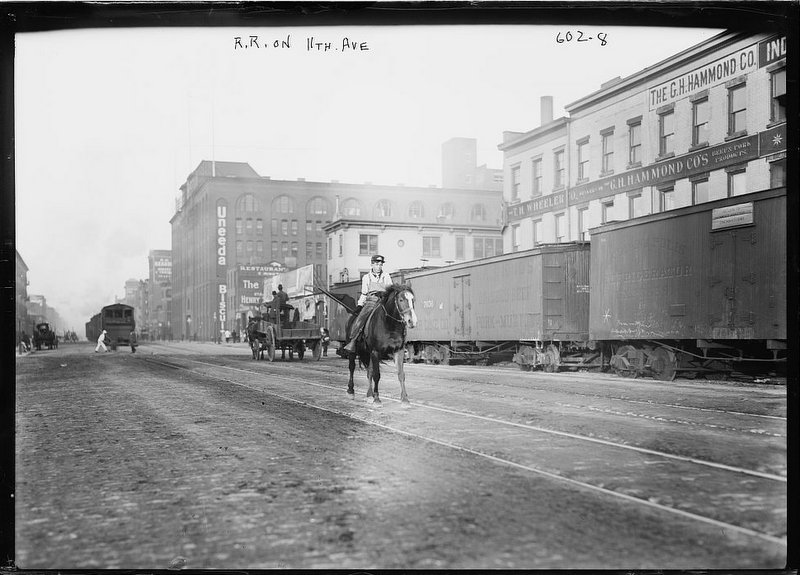
Depending on your perspective, the transformation of the Meatpacking District is either one of New York’s greatest success stories or biggest tragedies. It’s no secret that the area has gentrified to a rather alarming extent. The old slaughterhouses and meat packing plants have been replaced by designer shops, nightclubs, and swanky hotels. The Belgian block streets that were eerily abandoned in the 1980s and ’90s now see a constant stream of people at all hours of the day and night.
The compact neighborhood, sandwiched between Chelsea and Greenwich Village, stretches from 8th Avenue to the Hudson River and from 17th Street down to Horatio Street. Like much of downtown Manhattan, it was originally a Native American settlement and trading post. Its proximity to the Hudson River ensured its importance as a center for commerce, which evolved into a center for meatpacking specifically. According to the Meatpacking District BID, there were 250 slaughterhouses and meatpacking plants there in 1900 and by the 1930s, the neighborhood was the nation’s third-largest producer of dressed meat. Read on for ten fascinating secrets of the Meatpacking District.
1. The West Side Cowboys Patrolled 10th Avenue

By the 1840s, the area was a thriving commercial district, with three-story Greek Revival rowhouses where merchants set up shops on the ground floor and lived on the upper floors. In 1850, the Hudson River Rail Road arrived, transforming the neighborhood from a small village to a major commercial center. Freight train tracks ran up 10th Avenue at street level with no barriers to protect pedestrians and cars from the trains transporting food and vegetables, dairy, and other food to the city. As you can imagine, this led to a high number of casualties (over 500 by 1910), which earned the avenue the moniker “Death Avenue.”
In a bid to solve the problem of freight train-caused fatalities, a city ordinance created the West Side Cowboys. That’s right, actual cowboys recruited from the Wild West rode alongside the train tracks waving a red flag — or red lantern after dark — to warn drivers and pedestrians about oncoming trains. This continued until 1941, when George Hayde was the last cowboy to ride down 10th Avenue, escorting 14 freight cars filled with oranges.





